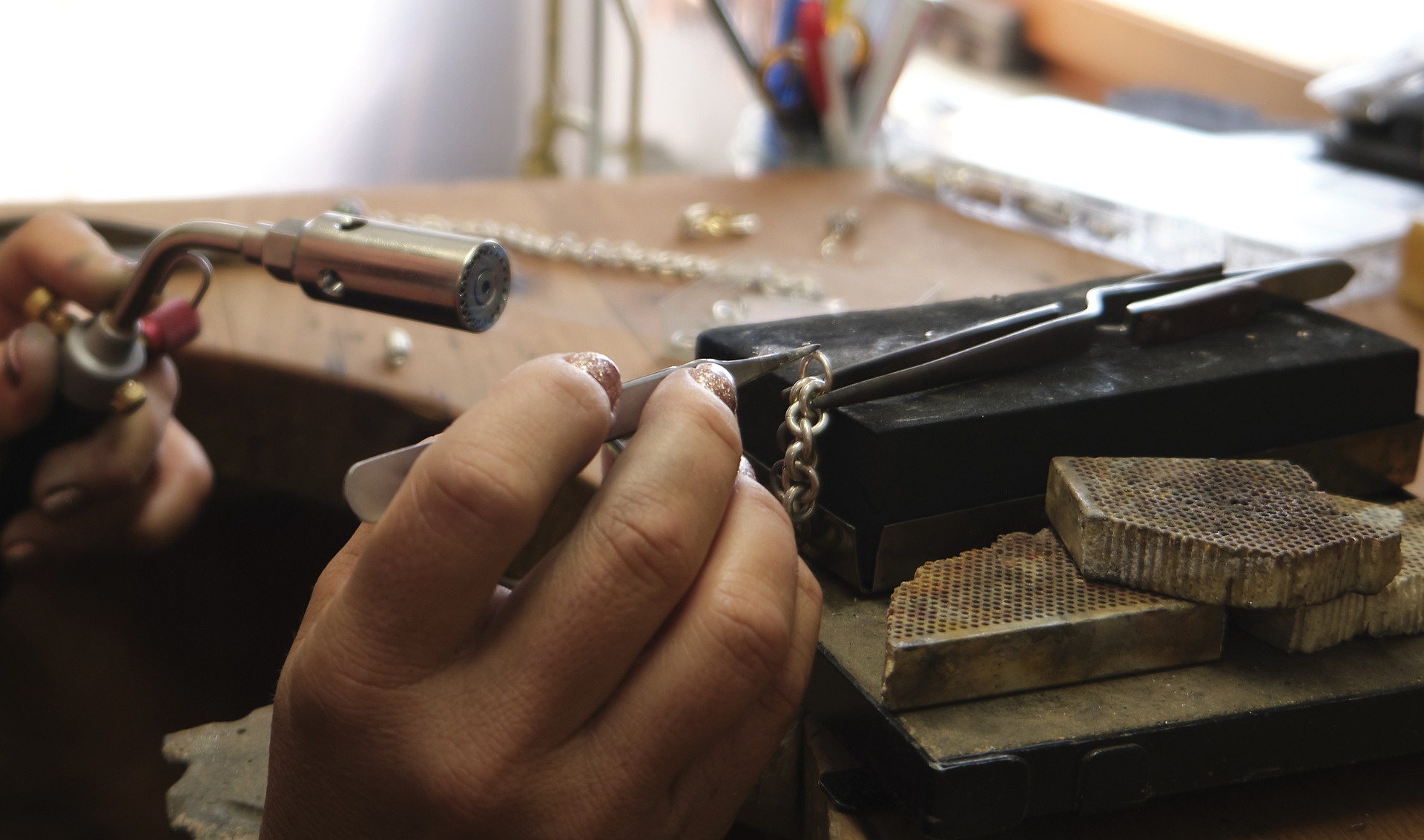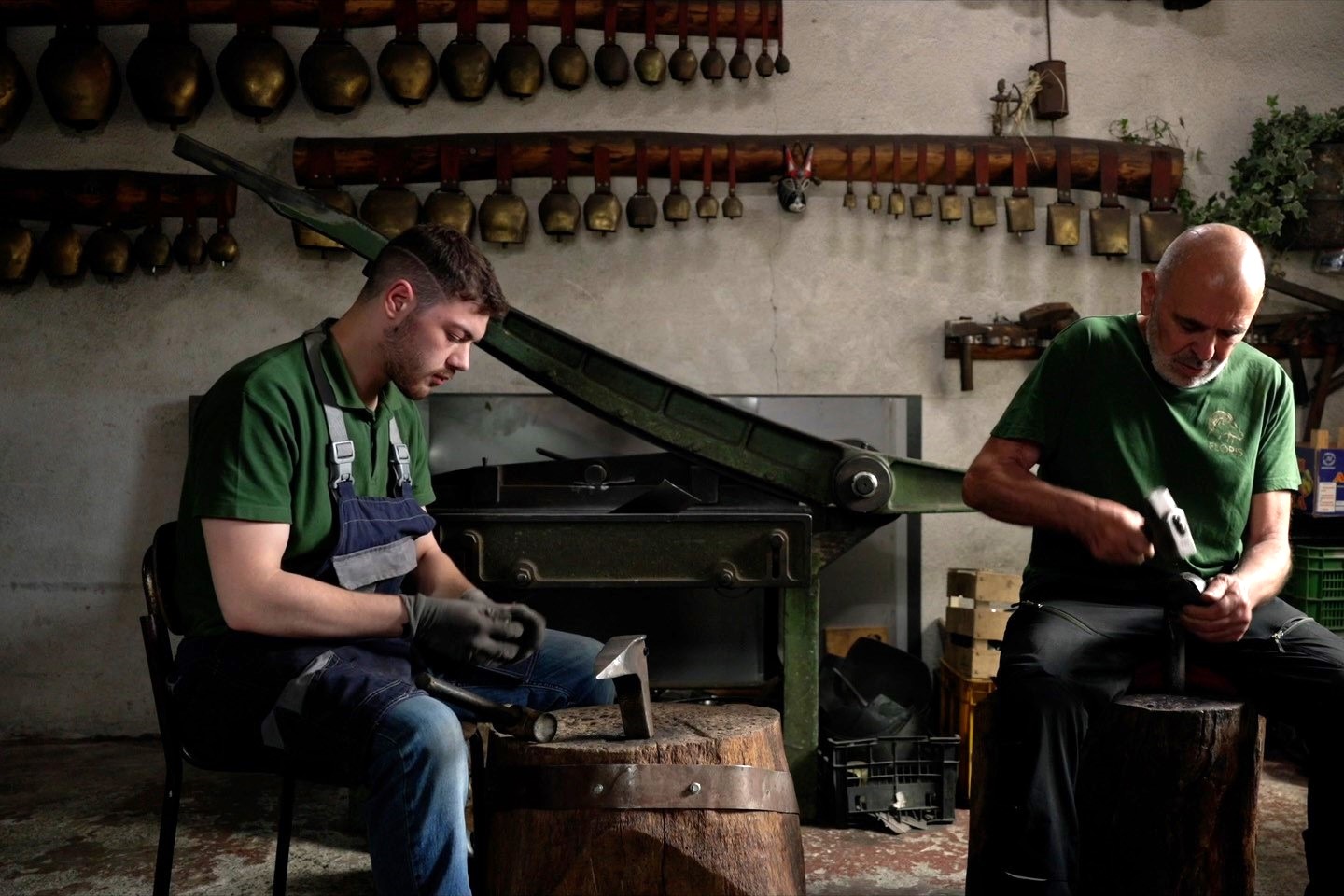The Greek colonization in South Italy left an immense cultural heritage: besides an influence on the language, traditions, and cuisine, there is also a relevant trace when it comes to art, in particular on the working of gold. This is particularly true in Crotone, in the Calabria region, where the goldsmith tradition is not as old as the city itself, which was founded in 710 BC, but was inspired by the Greeks, as evidenced by the typical filigree and styles of jewelry.
Today, Crotone is home to important archaeological sites that have brought to light an artistic treasure of ceramics, bronzes, and precious metals. In the past, gold and silver were very significant to the local people, who offered them to their gods, as shown by different excavations in the Archaeological Park of Capo Colonna. Local residents as well as pilgrims were eager to pay homage to their goddess Hera Lacinia, protector of herds, wellness, and fertility, and used to offer her the most valuable gifts. Indeed, in the last two decades, archaeologists have found objects dating back to an age between the 6th and 4th centuries B.C., including a winged sphinx, the gorgon, the siren, the Barchetta Nuragica and the Diadema Aureo.
This presence has deeply marked all regions in Southern Italy, with traces in art, architecture, decorations, and of course fine crafts. The goldsmith’s work of the masters in Crotone not only reflects the Greek tradition, but also contains Byzantine, Arabic, and Baroque influences. These cultures have crossed and overlapped over centuries, with a legacy that is replicated today and sometimes also reinterpreted. The world of connections is even more extended if we consider the folk traditions, like the Sicilian puppet, the Neapolitan Sciò Sciò, and the cameos from classical mythology, the saints, and the masks made for theatrical representations.
This is especially true for goldsmith masters in Crotone, artists able to craft precious metals in order to produce objects known worldwide: from gold to silver, pearls, corals and, precious stones. Thanks to an important feature, the work of these masters is a great example of the value of Made in Italy: the uniqueness of their work is the result of the ability to combine tradition and contemporary art, which means that the skill of patience typical of traditional craftsmen is now blended with the most modern techniques.
Over time, the Crotonese goldsmith has been appreciated in a variety of sectors: for instance, the religious art found in churches and cathedrals includes wonderful examples of votive crosses and decorations. The movie and entertainment world also has been seduced by this timeless jewelry, along with fashion designers, who started using them for their collections.
Several Crotone goldsmiths have become well known worldwide, especially when their work began to attract the interest of major figures. This is the case of Michele Affidato, who became famous for having designed sacred objects, appreciated by several Popes such as John Paul II and Benedict XVI. Same pattern followed by Gerardo Sacco, whose jewelry has been used in various cinema, theatre, and television productions and worn by Liz Taylor, Isabella Rossellini, Monica Bellucci, and Elena Sofia Ricci.
Can you tell us how you got close to this goldsmith art?
Usually, you start this job by studying, but for me it was a completely different experience. I come from a poor family and my stepfather forced me to leave school because I needed to contribute to the family income. That’s how I started working at a barbershop. After a while, the change: one of our clients who used to be a goldsmith artist asked my uncle if I could work for him. That’s how it all started: I was 10 and left when I was 20 to go to Valenza Po at Istituto Benvenuto Cellini: during the day I worked and at night I had classes and studied. Then, I went back to Crotone where, in 1962, started my business.
Do you have a unique moment of childhood which is related to your work?
I have many, but many of them are sad ones. I used to do many things, such as doing grocery shopping, use dangerous materials, clean jewelry and take them in a safe place with the risk of being robbed. But one day, I went to the beach to collect some stones. Later, I made a necklace with them. I left it on my table and one of our vendors asked who had made it. For the first time, my work was appreciated.
You call yourself a “self-taught” student. How did it make a difference in your career?
I wanted to study because I thought it could help me work better, but not taking classes was an advantage at last, because I did not follow a different path in my career. I remember comments by journalists who defined my jewelry unique, recognizable, and beautiful. Even a magazine in Japan once said: if you want to see new silvers, you need to go and check Gerardo Sacco’s ones. My products remind the farmers’ culture from the Mediterranean, with a modern touch.
As soon as the first samples were produced, Gerardo was awarded the 1st prize at the Goldsmith’s Exhibition in Florence and the Craftsman’s Oscar at the Exhibition of Sanremo. These national successes confirmed the originality and uniqueness of his creations and, thanks to them, his company is one of the most famous in the field. Some of his creations have been displayed at the Vittoriano Complex in Rome and in the Vatican Museums, while others were exhibited at important events organized by various Italian Institutes of Foreign Culture, in Brussels, Lisbon, Copenhagen, and Madrid.
Different cultures meet in a single art, with centuries of history coming to life through jewelry and bracelets, decorations and pendants, medallions, precious stones and glass paste. A valuable Italian tradition, Crotone goldsmiths are an example of how to combine a priceless heritage of art and culture with the craftsmanship of today’s extraordinary artists.






























